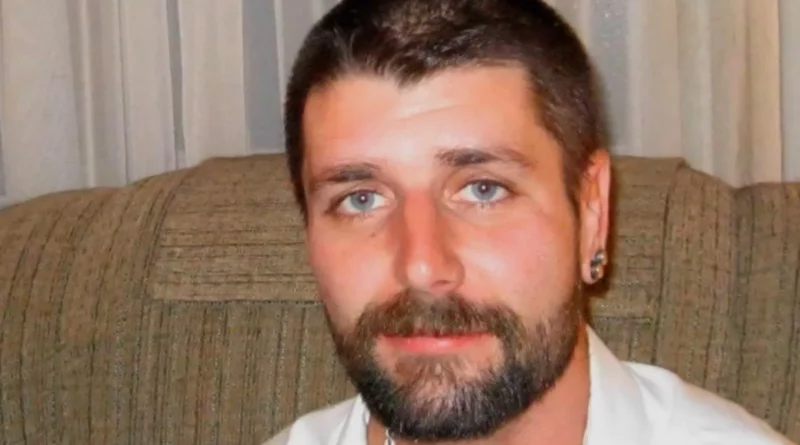Eric Haider Found Buried at His Construction Job Site in Dickinson North Dakota
On May 24, 2012, a hardworking 30-year-old construction worker named Eric Haider disappeared from a job site in Dickinson, North Dakota. His family spent nearly three years searching for him, only for his remains to be found buried six feet underground at the very place he had last been seen. Despite strong evidence of negligence and potential foul play, no charges were ever filed, and the case remains one of North Dakota’s most unsettling workplace tragedies.
Eric’s family continues to fight for justice, believing that his death was preventable and that those responsible should be held accountable. This article explores the events leading up to Eric’s disappearance, the failed investigations, and the lingering questions that demand answers.
Eric Haider: A Life Full of Passion and Determination
Eric Haider was known as a determined, hardworking man who loved his family and had a passion for the outdoors. Born prematurely, he faced significant health challenges, including hearing loss and heart problems. However, his perseverance and positive outlook on life allowed him to overcome these obstacles.
A devoted father, fiancé, and friend, Eric had a deep love for adventure. He had previously lived in Hawaii, where he enjoyed kayaking, cliff diving, and skiing. His family and friends described him as someone who would give the shirt off his back to help someone in need.
Despite struggling with past legal issues and health problems, Eric had turned his life around. He was engaged to Jody, a woman he loved dearly, and was building a future for his daughter and stepchildren. To provide for them, he sought out a stable and well-paying job in the construction industry.
The Job That Led to His Disappearance
Eric secured employment with Koffel Plumbing and Heating, a company based in Bismarck, North Dakota. His role involved working on a sewer main project in Dickinson, nearly an hour and a half from his home.
Although the job seemed like a great opportunity, Eric quickly grew uneasy about the company’s work environment. He told his mother and friends that the company had dangerous practices, cutting corners and ignoring basic safety protocols. He planned to quit as soon as he found another job.
On May 24, 2012, Mary Ellen, Eric’s mother, drove him to the Koffel crew’s meeting spot, where workers carpooled to Dickinson in a company van. That would be the last time she saw her son alive.
The Disappearance That Raised Questions
Eric’s workday proceeded as usual. According to his crew, they all went to Wendy’s for lunch, stopped at a tire shop, and returned to the work site around noon.
Shortly after returning, Eric was sent down into a trench to inspect a pipeline coupling. The foreman claimed that by 12:15 PM, workers began backfilling the trench—a process that fills holes with dirt.
By 1:30 PM, Eric was nowhere to be found, yet his coworkers failed to report him missing immediately. Instead, they claimed that he had walked off the site to cash his paycheck—an explanation that made little sense, given that:
- Eric left behind his wallet, lunchbox, backpack, and phone.
- His paycheck was later found inside his lunchbox, meaning he never took it.
- He was an hour and a half from home without a ride.
- His phone continued to ping from the job site hours after he allegedly “walked off.”
Eric’s fiancée, Jody, was supposed to pick him up at 6:30 PM that evening at the company’s meeting spot. However, when she arrived, all the crew members’ cars were gone, and Eric was missing.
She immediately called his coworkers, the company, and hospitals, but no one had seen him. By the following day, his family filed a missing person report, but authorities showed little urgency in investigating.
The Investigation That Failed Eric
When law enforcement finally interviewed the crew—five days after Eric disappeared—every member gave the same story: Eric had simply walked off the site and never returned.
Despite red flags in their statements, police did not investigate aggressively. Instead of treating the site as a potential crime scene, the company itself was allowed to direct the search efforts, dictating where investigators should dig.
Authorities conducted a dig at the job site on May 30, 2012, but multiple local witnesses—including a nearby construction worker and a resident—warned police they were digging in the wrong location.
These warnings were ignored, and the excavation was abruptly halted when a water line was struck, effectively shutting down the case. By November 2012, Eric’s case was classified as a cold case.
The Shocking Discovery in 2015
Eric’s mother, Mary Ellen, never stopped believing that her son had been buried at the job site. In 2015, a private investigator hired by the family finally got permission to dig at the site.
After three years of waiting, they found Eric’s body buried six feet underground—less than 10 feet from where police had initially searched.
His work clothes, tools, and hard hat were still intact. He was found in a crouched position, with one hand over the pipeline he had been inspecting—exactly where his coworkers claimed he had last been seen.
Forensic analysis determined that:
- Eric died at 12:19 PM—five minutes after the backfilling began.
- His nose was broken, likely from his hard hat being knocked off by the dirt.
- He had no dirt in his lungs, meaning he was unconscious or dead before he could take a breath.
- His right hand was missing, with no explanation from authorities.
Despite these findings, the state attorney refused to pursue charges, citing a lack of evidence of intent. The case was permanently closed in 2016.
The Fight for Justice Continues
Eric’s family remains devastated by how his case was handled. They believe:
- The company was negligent in failing to ensure worker safety.
- Eric’s death was covered up to protect the company.
- Authorities failed to take the case seriously from the start.
Although OSHA acknowledged violations, the statute of limitations prevented them from taking legal action. The family’s attempts to sue have been met with resistance, as no attorney in North Dakota is willing to take on the case against a powerful corporation.
Eric’s daughter lost access to survivor benefits when she dropped out of school due to emotional distress.
Conclusion
Eric Haider’s death was preventable, and his family deserves answers. The evidence suggests gross negligence, yet no one has been held accountable.
His family continues to advocate for change, hoping Eric’s story will prevent future workplace tragedies.
To support the fight for justice, you can:
- Follow the “Justice for Eric Haider” Facebook page for updates.
- Donate to the GoFundMe supporting legal efforts.
- Share Eric’s story to raise awareness.
Eric Haider’s life mattered, and his death should not be ignored.
Discover more from City Towner
Subscribe to get the latest posts sent to your email.




